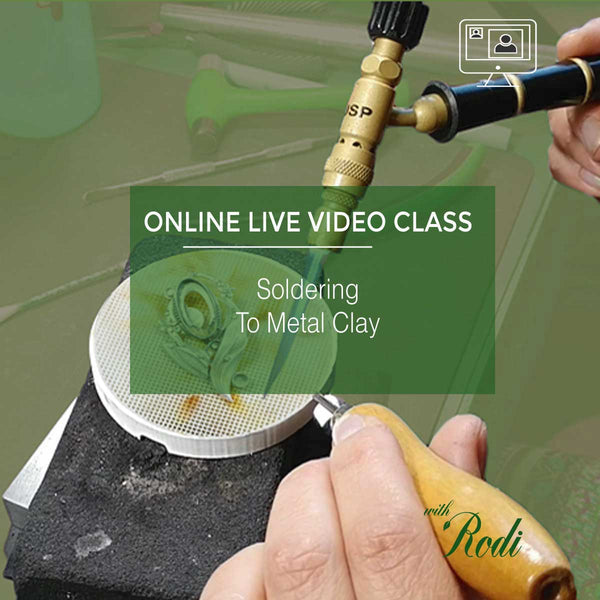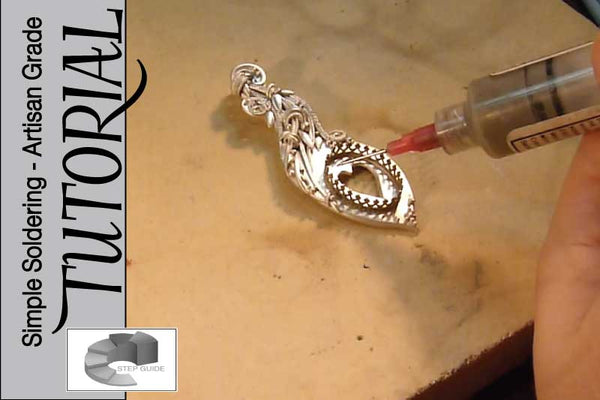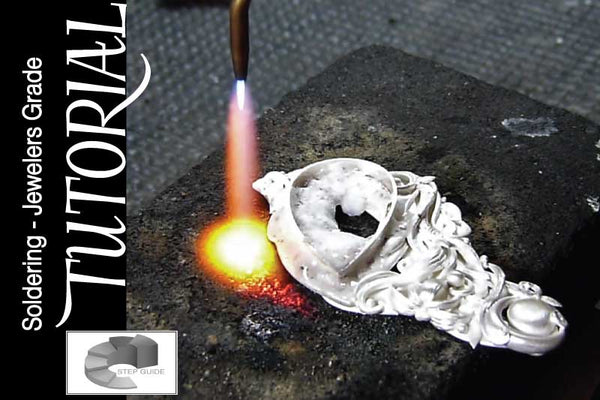Your Cart is Empty

Soldering On Metal Clay
3 min read
Although creating a setting and firing certain gemstones is a common practice within the metal clay community, soldering has been used in metalwork jewelry making for centuries. The skill of soldering is essential to expanding capabilities and opening creative avenues.
Firing gemstones with metal clay has impacts that make this practice HIGHLY questionable. Firstly, exposing any gemstone to high heat is technically "Heat Treating" the gemstone. This by nature will modify the properties of the stone. This means that even so called "firable" gemstones have their properties modified. If you sell your creations, you should be in a position to advise your client of these property changes. The most common property change is the weakening of the stone leaving it prone to chipping or cracking, along with a shorter lifespan. Want to know more? This article will clarify some of the legal requirements (North America) & clarify why we do not endorse this practice.
Although fully sintered metal clay can be considered "metal", meaning that the techniques of soldering are the same as fabricated metals but there are some considerations to keep in mind.
Metals created from metal clay have specific properties when compared to most fabricated metals, "sheet metals" for example.
The first element you may encounter is warping. There are a couple of reasons why metal clay can warp during the firing process;
-
Accelerated drying. (We addressed this in another post)
-
Insufficient support during firing.
-
High (< 20%) shrinkage rate.
If you have experience soldering, it becomes immediately apparent why a warped base will pose a challenge to soldering. Soldering to an uneven surface is to be avoided unless the painful removal of hair is one of your "things".
With advanced soldering skills, it is possible to fill small gaps, but in general 0.5 mm should be the maximum space you expect solder to fill.

Having spend more hours than I would like to admit correcting a warped creation in order to solder the gemstone setting, I am convinced that the prevention (or minimization) of warping is by far the better path to follow.
Can warping be corrected? Simple answer: Yes, but understand that you will be entering "Alice's Rabbit Hole", so make sure you pack plenty of patience.
The next important difference between metal from metal clay and fabricated metals is "POROSITY". Even when you ensure optimal sintering during firing, the metal created during firing will be much more porous than fabricated metals. This is due to the fact that the metal particles in metal clay are "fused" during the firing process in the same way as most metals are fabricated.
Although on a microscopic level, the metal may still contain small pockets of non-fused particles. However, fabricated metals undergo a second process of compression which rearranges the metal particles creating a more dense metal.
So the surface of metal clay metals will tend to be more porous than fabricated metals. This is a good thing as the surface will absorb just a little more solder, making the result just that little bit more stronger.
The flip side is, metal clay metals will also absorb more oils from the fingers when touching! This is one of the primary reasons solder fails. So ALWAYS clean your metal clay metals surface thoroughly with alcohol.
In conclusion, soldering to metal clay metals is no more challenging than soldering on fabricated metals, IF the correct steps have been taken to minimize warping.
Whether you prefer self-guided learning or live interactive learning, we have the learning opportunities to get you soldering like a pro.
Join Rodi for a live video online soldering class. With 3 levels of classes you have a growth path laid out for you.
SELF GUIDED TUTORIALS
If you are considering starting to solder, Sky Guide 6 (Artisan Grade Soldering) tutorial is a great way to get you started.
If you are looking to update or upgrade your soldering skills, then Sky Guide 7 (Jewelers Grade Soldering) tutorial will provide you with an in-depth insight into this essential jewelry making skill.
Leave a comment
Comments will be approved before showing up.



